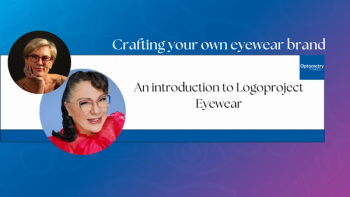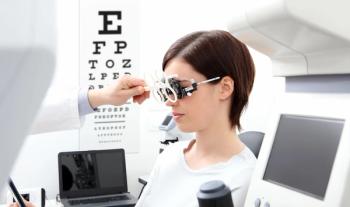
AAOpt 2024: The Tear Film and Ocular Surface Lifestyle Report on cosmetic habits and digital eye strain
Lisa Hornick, OD, MBA, FAAO, outlines key findings from the report on the impacts of healthy cosmetic habits and reducing digital eye strain.
A Rapid Fire session given by Lisa Hornick, OD, MBA, FAAO; Tracy Doll, OD, FAAO; Leslie O'Dell Hombach, OD, FAAO; and Pam Theriot, OD; at the AAOpt meeting in Indianapolis, Indiana on the key findings from the Tear Film and Ocular Surface Lifestyle Report, with a particular emphasis on four main areas: elective procedures and medications, cosmetics, digital eye strain, and environmental conditions. One of the primary takeaways from Hornick's presentation was the importance of addressing digital eye strain, which can affect both older patients and children. She highlighted that due to the increasing use of digital devices, even pediatric populations are at risk of developing meibomian gland dysfunction and dry eye disease. Hornick stressed the need for healthcare providers to actively screen for these conditions in all their patients, regardless of age. In terms of patient education, Hornick emphasized that many patients are unaware of what dry eye disease entails and often mistake it for other eye-related issues, such as allergies or foreign objects. She emphasized the importance of educating patients on the symptoms and underlying causes of dry eye disease, including the role of digital eye strain and cosmetic use.
Regarding cosmetics, Hornick discussed the adverse reactions that can occur due to certain ingredients, particularly prostaglandin analogs found in lash serums and other ocular cosmetics. She advised patients to be cautious of these products and to remove eye makeup thoroughly every night to prevent infections. To mitigate the effects of digital eye strain, Hornick recommended that patients take regular breaks from their digital devices, either by taking a 10-minute break every hour or following the 20-20-20 rule (looking at something 20 feet away for 20 seconds every 20 minutes). For children, she suggested a more stringent two-hour screen time limit with frequent breaks.
Overall, Hornick's presentation highlighted the multifaceted nature of ocular surface health and the importance of addressing emerging risk factors, such as digital eye strain and cosmetic use, through comprehensive patient education and proactive screening.
Newsletter
Want more insights like this? Subscribe to Optometry Times and get clinical pearls and practice tips delivered straight to your inbox.
















































.png)


